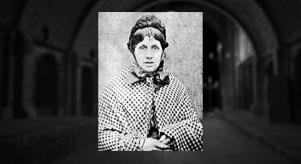
True crimes inspired by the Joker
What is it about the Joker that resonates with us? Of all the villains of the Marvel and DC universes, Joker is the one that we can’t seem to let go of (and that goes tenfold if you happen to be Jared Leto). He’s been portrayed by over 20 actors and is the subject of over 250 productions of different media types, including video games and television programmes.
And it’s not just onscreen. Off-screen, his prolific villainy continues to have a real-world impact. Jared Leto went so infamously method during his performance in Suicide Squad that he sent a dead pig to the cast on the first table read. He followed that up with used condoms and anal beads, a live rat for Margot Robbie and as a wrap present, porn, switchblades and dildos.
Leto’s working relationship with his castmates aside, there have been more worrying effects of the actions of Batman’s nemesis’. The depiction of violence and mental illness in 2019’s Joker, starring Joaquin Pheonix, led to the US military releasing a memo warning about mass shootings in cinemas and the NYPD sent undercover officers to cinemas on the opening weekend to make sure nothing happened.
In his review for the Telegraph, Robbie Collins pondered whether Joker 'should be locked in a strongbox then dropped in the ocean and never released,' the Guardian asked if it had gone too far and others stepped in to warn about the ‘dangerously misinformed’ depiction of mental illness.
Much of the controversy centred around the idea that the film promotes incel culture, with the character Arthur Fleck embarking on his life of crime as the Joker after he is rejected by a woman—the central narrative of the ‘involuntary celibates’.
When Phoenix was asked about whether the film could inspire other disenfranchised men to commit real-life atrocities, he had to walk out of the interview, before returning to say he had never thought about it. But while the numerous op-eds (many of which came out before the film had even opened) may seem like an overhype, we’ve seen real consequences to similar films before. Taxi Driver infamously influenced John Hinckley Jr., who was obsessed with the film, and his attempted assassination of Ronald Reagan. But more to the point, we’ve seen it before with Joker films.
The most infamous crime connected to the character is the Aurora shootings, when James Holmes killed 12 people and injured 70 during a screening of The Dark Knight Rises, indiscriminately firing a gun into the audience. At the time, the New York police commissioner Ray Kelly said Holmes had referred to himself as the Joker. But this turned out to be a rumour, with the choice of film incidental to the atrocity—chosen only because it was popular.
Unlike Holmes, though, the Joker was directly linked to mass shooters Jerad and Amanda Miller, who were the perpetrators of the 2014 Las Vegas shooting spree. The married couple dressed up as the Joker and Harley Quinn before they killed two police officers in a restaurant and an armed civilian, before police shot and killed Jerad. Amanda shot herself. The couple held extreme anti-government views, spoke of white supremacy and claimed they were trying to start a revolution. They often dressed up as supervillains, posting photos of themselves on Facebook and Jerad also dressed as the Joker when he filmed YouTube videos of himself spouting his extremist views.
Irish teenager Christopher Clancy also donned the Joker’s outfit to commit arson in 2009. The 17-year-old, who was described as 'introspective and reserved,' dressed up in a purple suit, with green hair and painted his face white when he broke into his school, poured petrol down a corridor and lit it on fire. Causing over €1 million of damage, he claimed it was revenge on the 'hypocrite' teachers, who treated the students as 'sub-human'.
Then there’s arsonist Joshua Van Buskirk, from California, who was 33 when he went on a Joker-inspired rampage, enacting revenge on his former groomsmen while he was separated from his wife. He started by setting fire to their cars, before graduating to throwing Molotov cocktails at their houses. At the scene, he left Joker cards (and also lube).
Heath Ledger’s rendition was said to be the influence for an attempted murder in 2016, when a 14-year-old schoolgirl in England attacked a friend, claiming the Joker 'motivated me.' On the day of the attack, she cut her face on either side of her mouth in an imitation of the Joker, before luring the victim to a secluded area with the promise of a present. Instead, she stabbed the girl in the chest with a knife she had taken from her kitchen. Luckily, the victim realised what was happening before the girl could cause serious damage.
Ledger’s Joker was also said to be the inspiration behind Belgian man Kim De Gelder’s knife attack at a nursery. In 2009, the then 20-year-old walked into a nursery in Ghent dressed as the Joker and fatally stabbed two infant children (aged eight and nine months old), as well as a 54-year-old woman looking after them. Twelve others were also stabbed but survived. The week before, he had murdered an elderly woman and police later found plans for further nursery attacks. He was found guilty on four counts of murder.
And finally, Christopher Lanum, a member of the US Army, was said to be similarly obsessed with the character, posters of whom covered his walls. In 2009, he painted his face, put on a Joker costume and attacked his roommate, using a stun gun on him, before stabbing him. Lanum’s roommate survived his injuries, but Lanum was shot and killed by police hours later after he pointed a gun at them.
In other words, the Joker is one supervillain who isn’t just a threat onscreen. The question is, what’s next?




